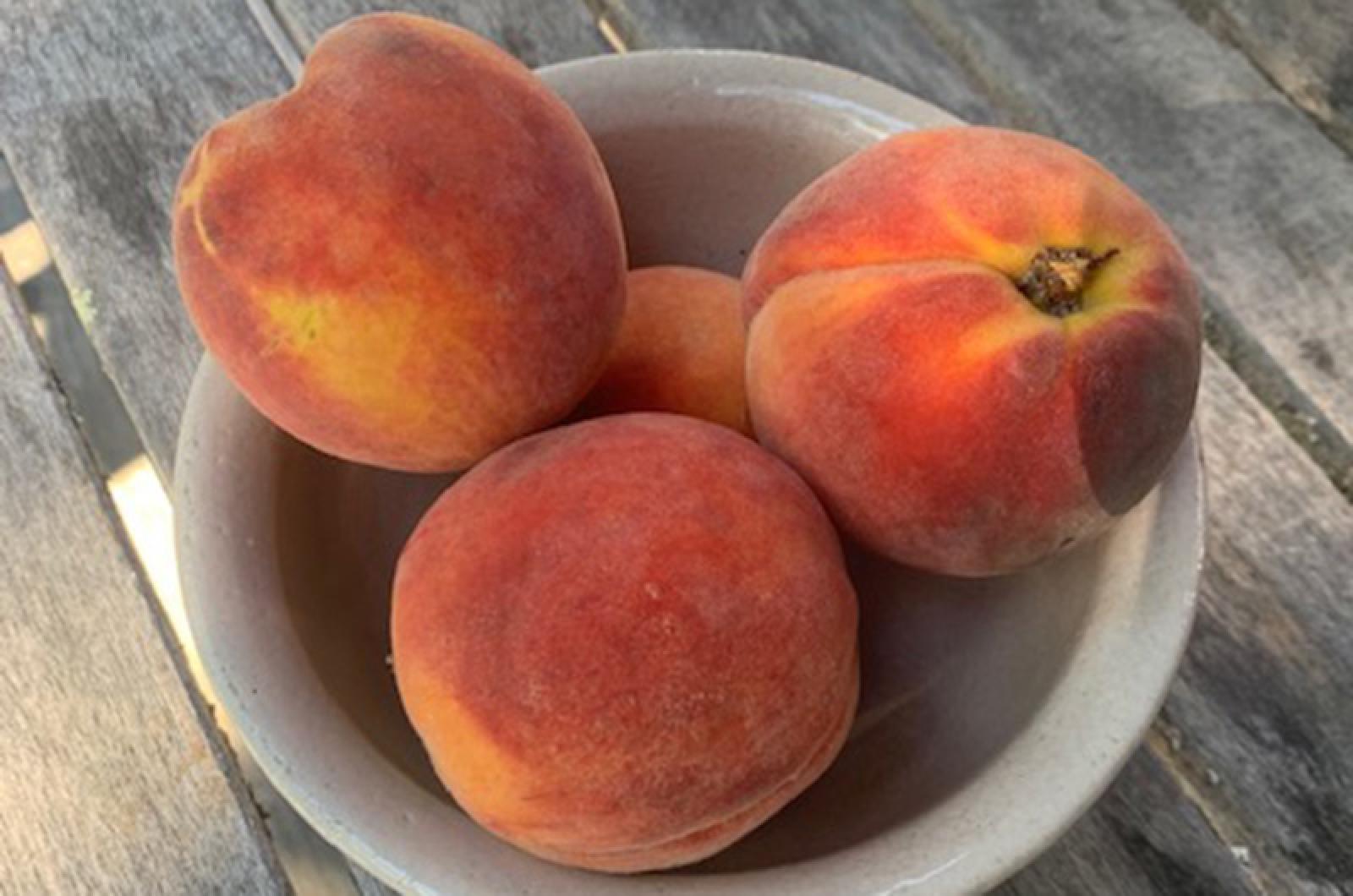There is one simple rule in our house for summer guests that will ensure a repeat Vineyard invitation. Bring fruit — lots of it — and it must be from a local farm.
Tim and Andrea are clearly rule-followers and nailed it — and thus are frequent visitors. They came laden with farm-fresh fruit — blueberries, plums, and peaches — from their neighborhood grower.
It is the peaches that have me particularly pleased. In my world, a peach is one of those things that is only worth eating when fresh and local. The ones that can be purchased from the supermarket rarely meet my standards: they must be harvested early and unripe to get to the grocery store from faraway states. Most domestic peaches come from California, Georgia and South Carolina, and must be transported over many miles.
And while some may argue about a notable gilded exception, I would contend that the luxury of that special peach is not attainable for many folks.
Peaches can and do grow locally though there definitely aren’t enough to go around. According to Simon Athearn of Morning Glory Farm, a handful of farmers on the Island grow a bit more than a handful.
He shared that Morning Glory’s peach crop had a poor fruit set this year, though the September fruiting varieties still may make a showing. A good season would have the farm producing less than 1,000 pounds total. Simon notes that “as an organic grower in a very humid area, the battle against fungus is very hard.” But don’t despair; Morning Glory does have Massachusetts peaches in from Carlson Orchards, just a hop, skip, jump, and ferry ride away in Harvard.
According to the Massachusetts Department of Agricultural Resources, there are about 20 pick your own peach farms and about 200 farms in the state that grow peaches and nectarines.
Note the inclusion of nectarines. These are the same species as peaches, prunus persica. Are you gobsmacked? I was quite surprised to learn that peaches and nectarines are one and the same. Only a single gene mutation causes the differences, though of course there are many varieties and cultivars of both.
Speaking of genes, though I share many with my father, he is not of the same ilk when it comes to peaches. He refuses to eat them or even touch them, as the fuzzy nature of their skin make him shudder. As a child, the only way he would consume one was after his mother peeled it. As an adult, he still requires assistance removing the skin before eating one.
Peaches are not native to this continent. As their scientific names suggests, they hailed from Persia and the Orient. Humans happily moved them around the world, eating and growing them in Europe, the Americas and wherever they could thrive.
And they did flourish, and are now commonly grown worldwide. In New England, peaches sometimes struggle because of the cold winter temperatures. Crop failure can occur when low temperatures in late winter kill off newly-growing peach buds. So, come winter, be rooting for those buds to endure.
Good peaches and good friends are very hard to come by. With pals like Tim and Andrea and a pile of peaches on my counter, life is truly all peaches and cream.
Suzan Bellincampi is islands director for Felix Neck Wildlife Sanctuary in Edgartown and the Nantucket Wildlife Sanctuaries. She is also the author of Martha’s Vineyard: A Field Guide to Island Nature and The Nature of Martha’s Vineyard.







Comments
Comment policy »